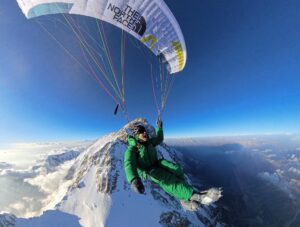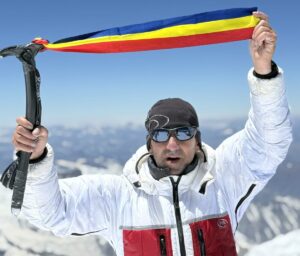Shortly after we published our latest story about Nanga Parbat, Mario Vielmo posted his Italian team’s summit report. In it, he detailed the group’s push and the long, difficult descent that took several days.
His home team also contacted us to clear up certain points, since Vielmo is still in Pakistan and his internet connection remains spotty. We have also spoken to Juan Pablo Toro, who has just returned to Buenos Aires. They shared their take on some unanswered questions: What did the Italians do when they heard the call for help from Damulevicius? Why was a porter with no tent in Camp 3, and why did Pawel never receive oxygen from Camp 3?
The answers clear up some questions, but as usual, raise others. As became clear as long ago as the abundantly reported Everest 1996 disaster, climbers’ memories never tell the whole story. Rather, they are pieces of a mosaic that only together provide a complete image of those first days of July on Nanga Parbat.
Mario Vielmo’s report
The Italian team, as it was known in Base Camp, included several climbers from various countries sharing the same permit. Vielmo, however, teamed up with Nicola Bonaiti, Tarcisio Bello, Valerio Annovazzi, and Argentinean Juan Pablo Toro. They had two high-altitude porters.
On July 2, Vielmo set off from Camp 3 with two tents. He planned to pitch a fourth camp on the way to the summit. It was the best strategy, since Vielmo was not fully recovered from some health problems, and the summit push without O2 from Camp 3 would otherwise have been too long.
HAP Muhammed Hussein went with them. Tarcisio Bello didn’t feel well when he arrived the previous day at Camp 3. He decided to stay there while his partners went up on a summit attempt.

Mario Vielmo on the summit of Nanga Parbat, July 3. Photo: Mario Vielmo/Facebook
Crowded tent
As they reached Camp 4’s location in the afternoon, one of the tents broke as they tried to pitch it in high winds. In the end, the five of them had to jam into a three-person tent. Following is Mario Vielmo’s testimony:
Throughout the night, the wind reaches 45kph with gusts of at least 70kph. We are stuck inside the tent, unable to move or melt snow to make water for everyone. We are scared, dehydrated, and some of us have cold feet.
At one point, a Pole approaches our tent telling us that Pawel, still descending from the summit, feels bad and needs help, since he is suffering from AMS. We offer him dexamethasone, but they tell us they have already administered it. He would need oxygen, but none of us have it. Later they ask us to go and help carry Pawel to the tent. We have no place in the tent but we still prepare with difficulty to go out. But it is too late. The first to leave is Muhammed, who returns shortly after. Pawel didn’t make it.
Then they will tell us that Pawel was already sick with edema when he reached the summit. The only thing that could, perhaps, have saved him would have been some supplemental oxygen that only the sherpas at Camp 3 had.
The Italian team leader remarks that, at dawn, they needed two hours to get dressed and prepare to leave the crowded tent. That explained why they had no time to help Pawel Kopec, his home team told ExplorersWeb.
“Mario has a history of helping other climbers in trouble, such as Don Bowie when he broke a leg on K2 in 2007, and on GI, where Mario helped a German climber who had fallen in a crevasse,” they noted.
As the Italian team leader wrote, other climbers on the mountain agreed that only supplementary oxygen could have saved him. Saulius Damulevicius confirmed that Kopec was in a serious state.
“Pawel was semi-conscious, and apathetic when we were with him,” he told ExplorersWeb. “We talked to him to encourage him, but he was not talking back.”
O2 available but was there anyone to carry it?
None of the climbers in Camp 4 that night (the Italians, Damulevicius, Lanko, and Ashurli) had any O2 on hand. But oxygen was available in Camp 3.
“Piotr Krzyzowski (the leader of the Polish team) was asking everyone to send oxygen to Camp 4, offering to pay for it,” Naila Kiani, who at the time was in Camp 3 after her summit, told ExplorersWeb. “Dawa Tenjen Sherpa from Imagine Nepal told Piotr that we could have one or two bottles if Piotr found someone fit enough and willing to take them from Camp 3 to the sick climber.”
But finding volunteers was not easy.
“The problem is that everyone was so exhausted after the summit push, no matter whether they had used supplementary O2 or not,” Kiani explained. “Half of the teams left C2 on July 1, rested a few hours at C3, then left for the summit.”
This involved a 1,300-vertical-meter climb in each direction.
Kiani went on: “The sherpas, the HAPs, the foreign climbers, we were all exhausted. I remember I thought I wanted to go, but then I would surely need someone to rescue me.”

Damulevicius at Camp 3 on Nanga Parbat. Photo: Flor Cuenca
Camp 3’s mystery porter solved
The Italian team also wanted to clarify some points about Akhbar, the Pakistani HAP whom Flor Cuenca found wandering around the previous day in Camp 3.
“At first, Victor Rimac and I thought he was Marco Confortola’s porter,” Cuenca told Explorersweb. It seemed to make sense, as Akhbar’s surname is Durrani. He was the brother of Ali Durrani, Marco Confortola’s personal HAP. Akhbar, however, worked for Juan Pablo Toro and Valerio Annovazzi.
“Only Muhammed Hussein went on from Camp 3 to the summit with the group,” Vielmo’s home team told ExplorersWeb. “He was working as a porter for Vielmo, Bello, and Bonaiti.
Juan Pablo Toro explained the situation with Akhbar in a phone interview with Explorersweb from Buenos Aires.

Juan Pablo Toro. Photo: Facebook
“We were not aware that Akhbar was out in the open at Camp 3, ” Toro said.
The porter had worked with them during the acclimatization process. But on June 26, while the climbers were on their last rotation, Akhbar said he wanted to go to the summit, as his brother Ali had.
Porter summited on his own
“At that moment, we told him the summit was not an option for us, since we climbed without oxygen and were not yet prepared,” Toro explained. “In the end, he wanted to go to the summit so badly that we agreed to separate. We stayed in Camp 3 and he went up with his brother and some others. He topped out and returned exhausted and with a painful foot because of problems with his boot.”
Toro continued:
After 3-4 days, the day came for us to attempt the summit ourselves, but Akhbar was too tired and in pain to go all the way with us. Finally, he agreed to support us only until Camp 3. We had a tent in Camp 2 and another in Camp 3, so we told him he could use the Camp 2 tent and bring it up to Camp 3 with him. He said he didn’t need it, because he would stay with some other porters. “Don’t worry about me,” he said. We left for Camp 3 while Akhbar remained behind, still tired and with some foot pain. When we arrived in Camp 3, we spent some time looking for our gear cache, which was buried in fresh snow. Then we pitched the tent and got inside. At no time did we see Akhbar. He didn’t come to us and never asked for help. We would have found a solution for him if he had. We only knew he had no agreed place to stay. After Akhbar returned to Base Camp days later, he himself told us that he had gone up to Camp 3 without our tent and without a place to stay. But he trusted that he could use any of the tents left empty after the climbers set off for the summit.
Toro said he is sure Flor Cuenca had no ill intentions when she recalled her experience in Camp 3. As for Akhbar, Toro believes that the Pakistani simply didn’t want to carry the weight of the tent from C2. But his plan to find an empty tent failed when he reached Camp 3.
“We had a tent for him, we insisted he carry it up, and he didn’t want to,” Toro said. “Moreover, he didn’t tell us the truth because he claimed he had agreed to stay in someone else’s tent. Otherwise, we wouldn’t have let him go.”

Climbers midway up Nanga Parbat. Photo: Juan Pablo Toro
Building a mosaic
The story of what happened on Nanga Parbat between July 1 and 6 remains incomplete. Every testimony is part of a mosaic that only makes sense as a whole. We still hope to hear from others, to add more pieces to the puzzle. Yet every point of view, even with contradictions and gaps, is worth sharing, especially if it helps avoid unnecessary loss of life in the future.






